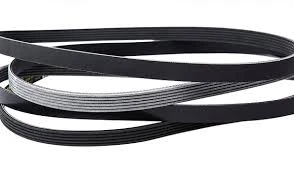- Arabic
- French
- Russian
- Spanish
- Portuguese
- Turkish
- Armenian
- English
- Albanian
- Amharic
- Azerbaijani
- Basque
- Belarusian
- Bengali
- Bosnian
- Bulgarian
- Catalan
- Cebuano
- Corsican
- Croatian
- Czech
- Danish
- Dutch
- Afrikaans
- Esperanto
- Estonian
- Finnish
- Frisian
- Galician
- Georgian
- German
- Greek
- Gujarati
- Haitian Creole
- hausa
- hawaiian
- Hebrew
- Hindi
- Miao
- Hungarian
- Icelandic
- igbo
- Indonesian
- irish
- Italian
- Japanese
- Javanese
- Kannada
- kazakh
- Khmer
- Rwandese
- Korean
- Kurdish
- Kyrgyz
- Lao
- Latin
- Latvian
- Lithuanian
- Luxembourgish
- Macedonian
- Malgashi
- Malay
- Malayalam
- Maltese
- Maori
- Marathi
- Mongolian
- Myanmar
- Nepali
- Norwegian
- Norwegian
- Occitan
- Pashto
- Persian
- Polish
- Punjabi
- Romanian
- Samoan
- Scottish Gaelic
- Serbian
- Sesotho
- Shona
- Sindhi
- Sinhala
- Slovak
- Slovenian
- Somali
- Sundanese
- Swahili
- Swedish
- Tagalog
- Tajik
- Tamil
- Tatar
- Telugu
- Thai
- Turkmen
- Ukrainian
- Urdu
- Uighur
- Uzbek
- Vietnamese
- Welsh
- Bantu
- Yiddish
- Yoruba
- Zulu
сеп . 23, 2024 18:43 Back to list
Understanding the Importance of Rubber Timing Belts in Engine Performance and Maintenance
Understanding Rubber Timing Belts Importance and Maintenance
Timing belts, crucial components in internal combustion engines, ensure that the engine's valves open and close at the right times in relation to the position of the pistons. Among the various materials used to manufacture these essential belts, rubber is the most common choice due to its flexibility, durability, and availability. Rubber timing belts provide a quiet operation, absorb engine vibrations, and withstand various environmental factors, making them indispensable in automotive engineering.
The primary function of a timing belt is to synchronize the rotation of the crankshaft and the camshaft. This synchronization is vital for the engine's performance, as it ensures that the valves open and close at optimal moments during the intake and exhaust cycles. A rubber timing belt typically features teeth that grip onto gears, allowing it to manage this precise timing effectively. Moreover, it replaces the older timing chains, offering a lighter and quieter alternative with less maintenance required.
However, like any automotive component, rubber timing belts are subject to wear and tear. Factors such as heat, oil, and age can contribute to their deterioration. As rubber is susceptible to environmental stressors, it is essential for vehicle owners to monitor the condition of their timing belts regularly. Most manufacturers recommend replacing timing belts every 60,000 to 100,000 miles, depending on the vehicle model and driving conditions.
rubber timing belt

Neglecting to replace a worn timing belt can lead to dire consequences. A ruptured timing belt can cause significant damage to the engine, including bent valves or a damaged cylinder head. It may even result in a complete engine failure, which can be both costly and inconvenient for vehicle owners. Therefore, adherence to the recommended maintenance schedule is crucial for safeguarding the vehicle’s engine health.
To ensure a rubber timing belt functions optimally, regular inspection is key. Vehicle owners should watch for signs of wear, such as cracking, fraying, or any signs of oil contamination. It is advisable to have the timing belt checked during routine maintenance visits by a qualified mechanic. Additionally, when replacing a timing belt, it’s prudent to replace related components—such as tensioners and pulleys—to ensure the entire timing system operates smoothly.
In conclusion, rubber timing belts are vital to the performance and longevity of any vehicle's engine. Routine maintenance, careful observation of wear, and adherence to replacement schedules will not only enhance the life of the timing belt but also prevent costly repairs down the line. With proper care, vehicle owners can ensure their rides run smoothly and efficiently for years to come.
-
Korean Auto Parts Timing Belt 24312-37500 For Hyundai/Kia
NewsMar.07,2025
-
7PK2300 90916-T2024 RIBBED BELT POLY V BELT PK BELT
NewsMar.07,2025
-
Chinese Auto Belt Factory 310-2M-22 For BMW/Mercedes-Benz
NewsMar.07,2025
-
Chinese Auto Belt Factory 310-2M-22 For BMW/Mercedes-Benz
NewsMar.07,2025
-
90916-02660 PK Belt 6PK1680 For Toyota
NewsMar.07,2025
-
drive belt serpentine belt
NewsMar.07,2025

